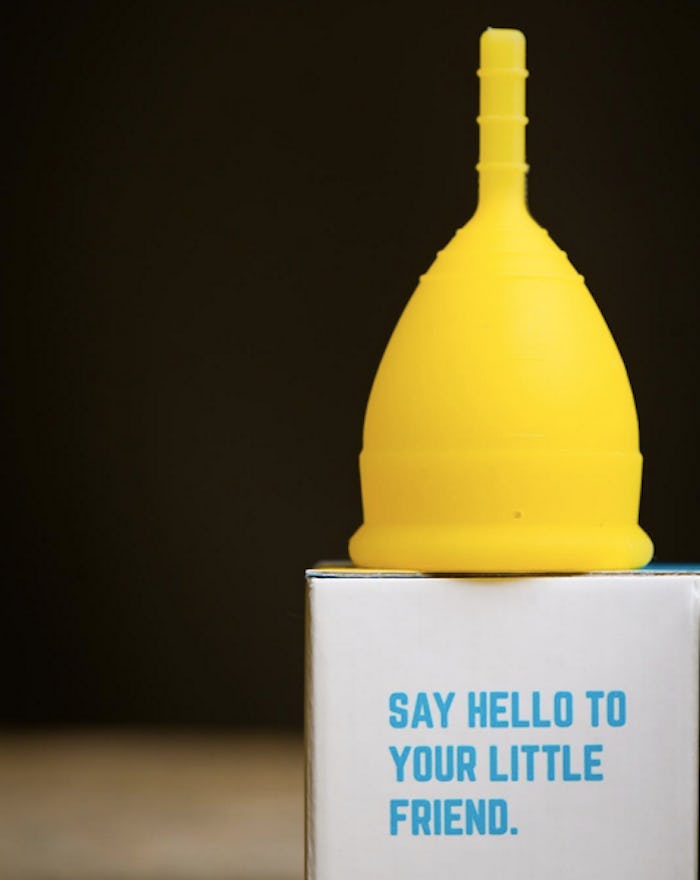When I started my period for the first time, my mom handed me a maxi pad the size of a hoagie roll and sent me to the bathroom. Being an active teenager, I complained about the bulkiness and begged my mom to upgrade me to tampons, so I could swim and do other sports while on my period. I'll be honest, I was super stoked about tampons. However, my fandom wavered when I heard about menstrual cups. I was curious and wanted to know more, but before switching, I had to answer one quesiton: are menstrual cups safe?
I am a pretty open-minded person, and always up for trying new things, but when it comes to my feminine hygiene and care, I don't take things lightly. Research was in order and I wanted to learn everything I could about menstrual cups instead of being impulsive and buying one on a whim. But before I could discern how safe the cup is, I needed to understand how they work, in general.
On the website for the Lena Cup, you can see the three different folding techniques for inserting the cup: the C-fold, the 7-fold, and the Punch Down fold. Depending on your body, certain folds may work best to insert the cup into your vagina. Once it's in place, the cup forms a suction to the vaginal walls, which will prevent any blood from leaking (a big question and concern for me, as well as my other friends who were curious about menstrual cups). Once the cup is secure inside you, it can hang out for at least eight hours before needing to be removed, according to Mind Body Green.
After learning this, menstrual cups were looking like the dream product, but I still needed to know: are there any dangers to using the cup? After learning more, it didn't take long to discover that yes, menstrual cups are safe, and a perfectly healthy way to manage your period. In 2011, the Journal of Women's Health published a study that found, "[a menstrual cup] has no significant health risks and is acceptable to many women without the need for fitting or other medical services."
The safety of the cup is attributed to the materials with which it is made. As Mayo Clinic reported, menstrual cups are made out of silicone or rubber, meaning they are free of the irritants common in other menstrual care products. Since menstrual cups do not contain bleaches, chemicals or other toxins used in the production of tampons, many women experience less sensitivities and allergic reactions when using the cup, according Healthy Women's website. While allergies and skin irritations are no walk in the park, the biggest health risk from the chemical in tampon is toxic shock syndrome (TSS). Avoiding this potentially life-threatening condition scores huge points for the cup.
If you've been thinking of trying out a menstrual cup, rest assured it's a safe choice. As long as you follow the directions and guidelines for sanitation, your experience with the cup should be easy and risk-free. However, if you have an IUD, it's important to consult with your doctor before using a menstrual cup. With so many options available, it's possible to find a cup that's right for you and your period. And the best part is, it just might make that time of the month less of a dreaded week.
